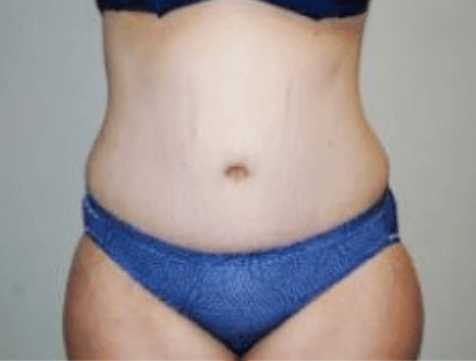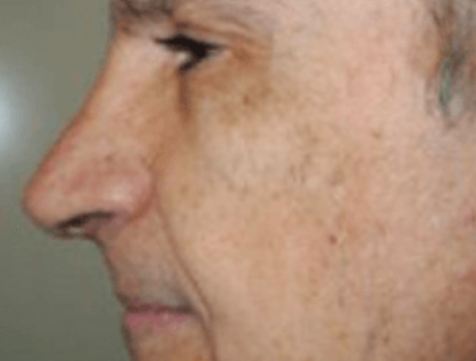Age spots, also known as liver spots or sunspots, are a common skin concern among many individuals, particularly those who have spent significant time in the sun. As a board-certified plastic surgeon specializing in cosmetic dermatology, Dr. Amy Bandy has extensive experience helping patients address age spots and achieve smoother, more youthful-looking skin. This comprehensive guide will delve into the science behind age spots, explore effective removal techniques, and discuss preventive measures to minimize their appearance.
Contents
- 0.1 Understanding Age Spots
- 0.2 Causes and Risk Factors
- 0.3 Prevention Strategies
- 0.4 At-Home Treatments
- 1 Professional Treatments
- 1.1 Combination Approaches
- 1.2 Your Journey to Smoother Skin Starts Here
- 1.3 FAQs
- 1.3.1 How long does it take for age spots to develop?
- 1.3.2 Can age spots be a sign of an underlying health condition?
- 1.3.3 Are age spot removal treatments safe for all skin types?
- 1.3.4 Are there any side effects associated with age spot removal treatments?
- 1.3.5 How long do the results of age spot removal treatments last?
Understanding Age Spots
Age spots are flat, tan, brown, or black spots that develop on the skin, primarily in areas exposed to the sun, such as the face, hands, shoulders, and arms. These spots result from prolonged exposure to ultraviolet (UV) radiation, which stimulates the production of melanin, the pigment responsible for skin color. Over time, melanin can become concentrated in certain areas, leading to the formation of age spots.
Causes and Risk Factors
Several factors contribute to the development of age spots, including:
- Sun Exposure: UV radiation from the sun is the primary cause of age spots. Cumulative sun exposure over the years increases the likelihood of developing these spots.
- Aging: As we age, the skin becomes less able to regenerate and repair itself, making it more susceptible to pigmentation issues like age spots.
- Genetics: Some individuals may be genetically predisposed to developing age spots, especially if they have a family history of skin pigmentation disorders.
- Hormonal Changes: Fluctuations in hormone levels, such as those experienced during pregnancy or menopause, can increase melanin production and contribute to the formation of age spots.
Prevention Strategies
While age spots are often a natural consequence of aging and sun exposure, certain preventive measures can help minimize their development, including:
- Sun Protection: Apply broad-spectrum sunscreen with a minimum SPF of 30 daily, even on cloudy days. Reapply sunscreen every two hours, especially when swimming or sweating.
- Protective Clothing: Wear wide-brimmed hats, sunglasses, and clothing that provides UPF (Ultraviolet Protection Factor) to shield the skin from harmful UV rays.
- Seek Shade: Limit time spent in direct sunlight, particularly during peak UV hours between 10 a.m. and 4 p.m.
- Avoid Tanning Beds: Refrain from using tanning beds, as they emit UV radiation that can accelerate skin aging and increase the risk of age spots and skin cancer.
At-Home Treatments
While professional interventions may be necessary for significant or stubborn age spots, several at-home remedies can help lighten their appearance and improve overall skin tone, including:
- Topical Creams: Over-the-counter creams containing ingredients such as hydroquinone, retinoids, vitamin C, or alpha hydroxy acids (AHAs) may help fade age spots with regular use.
- Exfoliation: Gentle exfoliation using scrubs or chemical exfoliants can slough off dead skin cells, promoting cell turnover and reducing the visibility of age spots.
- DIY Masks: Natural ingredients like lemon juice, apple cider vinegar, or aloe vera may have mild bleaching properties that can help lighten age spots over time.
Professional Treatments
For individuals seeking more immediate and noticeable results, professional age spot removal treatments performed by a qualified plastic surgeon or dermatologist may be recommended. These treatments include:
- Laser Therapy: Lasers target melanin in age spots, breaking it down and allowing the body to eliminate pigmented cells, resulting in clearer skin.
- Chemical Peels: Chemical peels involve applying a solution to the skin that causes exfoliation and peeling, revealing smoother, more evenly toned skin underneath.
- Cryotherapy: Liquid nitrogen is applied to age spots, freezing them and causing them to blister and eventually fall off, leaving behind clearer skin.
- Microdermabrasion: This non-invasive procedure uses a handheld device to exfoliate the outer layer of skin, reducing the appearance of age spots and improving overall skin texture.
Combination Approaches
In some cases, combining different treatment modalities may yield the best results. Your plastic surgeon or dermatologist can assess your skin concerns and recommend a customized treatment plan tailored to your specific needs and goals.
Your Journey to Smoother Skin Starts Here
If you’re ready to take the next step toward achieving smoother, more youthful-looking skin, Dr. Amy Bandy and her experienced team in Newport Beach, CA, are here to help. Contact us today at 949-779-8714 to schedule a consultation and learn more about our advanced age spot removal treatments.
FAQs
How long does it take for age spots to develop?
Age spots typically develop gradually over time, appearing more prominently as individuals age and accumulate sun exposure. However, genetic factors and lifestyle choices can also influence their formation.
Can age spots be a sign of an underlying health condition?
In most cases, age spots are benign and do not indicate an underlying health problem. However, if you notice changes in the size, shape, or color of age spots, it’s essential to have them evaluated by a medical professional to rule out any potential concerns.
Are age spot removal treatments safe for all skin types?
Age spot removal treatments can be performed on individuals with various skin types and tones. However, certain factors, such as skin sensitivity and pre-existing skin conditions, may affect treatment options and outcomes. Your plastic surgeon or dermatologist will assess your skin’s suitability for specific treatments during the consultation process.
Are there any side effects associated with age spot removal treatments?
Common side effects of age spot removal treatments may include temporary redness, swelling, and mild discomfort at the treatment site. These side effects typically resolve within a few days to a week following the procedure. Serious complications are rare but may include scarring, infection, or changes in skin pigmentation.
How long do the results of age spot removal treatments last?
The longevity of results depends on various factors, including the treatment method used, individual skin characteristics, and sun protection practices. While some treatments may provide long-lasting results, maintenance treatments and sun protection are essential for preserving the benefits of age spot removal over time. Your plastic surgeon or dermatologist can provide personalized recommendations for maintaining your results.













